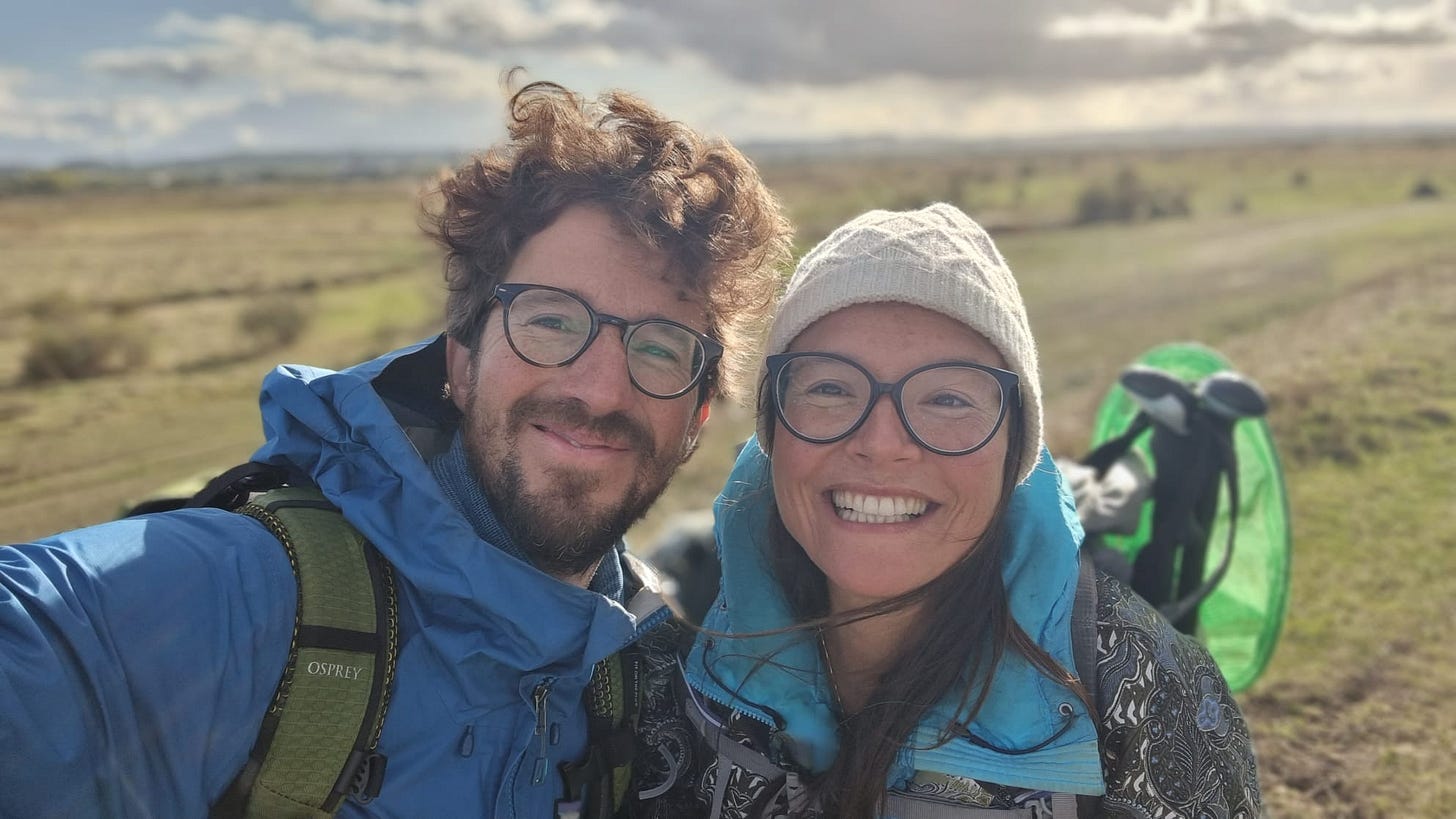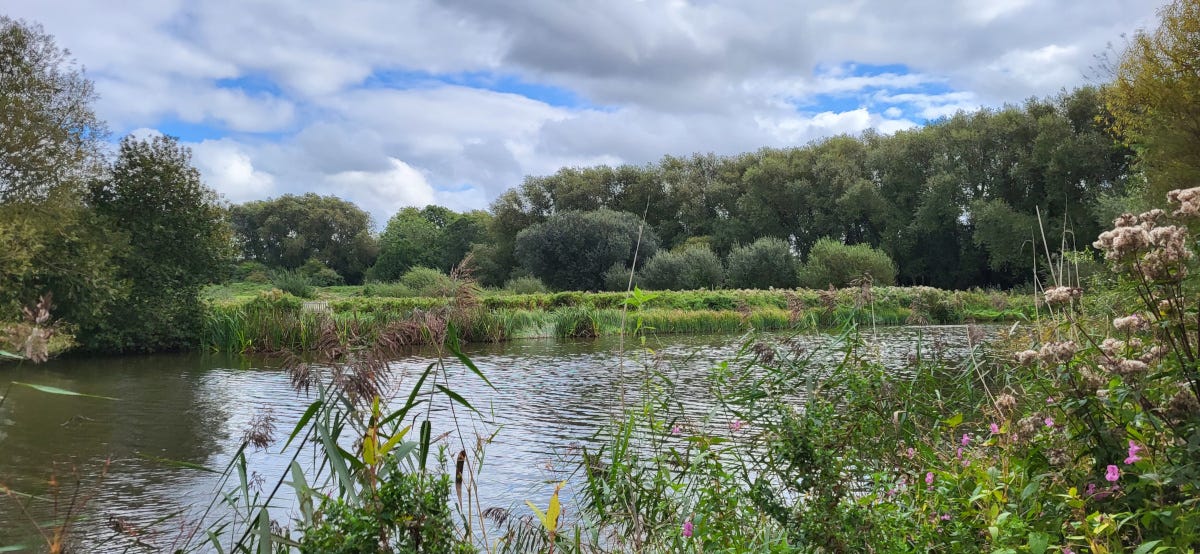Imagine a world flowing with rivers clean enough to drink
This is Li An Phoa's vision, and she's just walked 220 miles along the River Thames to share it.
Hello friends,
For the last few weeks I have been following water campaigners Li An Phoa and Maarten van der Schaaf on Instagram, as they’ve been making an epic walk following the River Thames, all 220 miles of it, from source to sea.
Just yesterday, they finally reached the point where it flows out into North Sea. Along the way they’ve been meeting with fellow river-walkers, learning about the Thames’ many stories, inhabitants, songs, its trials and tribulations, and inviting people to take part in a citizen science project measuring the water quality by taking samples. You can read the diary account of their walk Here.
I shared a conversation with Li An Phoa about her campaign for Drinkable Rivers on my blog a couple of years ago, when this walk of the Thames was still in the early planning stages. Li An explained that for her, this journey began much earlier, back in 2005, when she was invited to join a canoe trip up the Rupert River in Northern Canada, a protest paddle against a planned hydroelectric damming scheme. Having grown up in the densely populated Netherlands, Li An was struck by the fact that she was able to drink directly from the river as they paddled and camped.
That simple gesture, one that would have been utterly familiar to our forebears, of scooping water from a stream or river to drink, is one that has been stolen from our generation. Indeed, when Li An returned to the Rupert River just three years later, she was heartbroken to find that its waters were now polluted with mercury, toxic and undrinkable
She responded to the Rupert River’s plight by setting up a Netherlands-based NGO ‘Drinkable Rivers’. It’s now a growing movement that seeks to tackle water pollution by reconnecting people with their watershed, working towards making our rivers clean enough to drink from again.
“Not so long ago, most of our rivers were drinkable. But not anymore. We mobilise people to make our rivers drinkable again”
Li An realised that drinkable rivers are an indicator of healthy living, a touchpoint that affects everything else. When we can drink from our rivers, it means that a whole ecosystem is healthy and in balance. Rivers are drinkable when all actions and relations in a watershed are in alignment.
Drinkable Rivers reconnects communities with their rivers through the gentle conviviality of walking together, talking and sharing experiences of the river, and through engaging with ‘citizen science’.
She has already completed similar walks of the River Meuse/Maas and the River IJssel. For Li An, this holistic, imaginative and embodied approach to campaigning is a way to involve more people in defending their local waters.
“We invite all kinds of local people to join in doing research in their own water or in a local stream. They can use devices like sensors and measuring strips, and so learn how many things they can read from the water. It’s really a mirror of how we live; you can see what kind of agriculture, what traces are left behind, how we are washing ourselves, what food we are eating and how we’re treating the water and how we’re using the landscape, whether there is enough space for dragonfly larvae to grow and things like that. So it’s a way of awakening our senses and our abilities to observe.”
There’s a metaphorical power in this shared activity too. These long walks show us that by going literally step by step, contributing as each of us is able before passing the baton on to the next person, and the next, with patience and collaboration, we can accomplish big things that would be daunting to undertake alone.
As Li An explained to me:
“Going step by step you can really accomplish things. You can cover great distances. You can be in touch with many people and landscapes. You really meet life while you’re there, in all its diversity. And that’s important because in order to reach the ambition of a drinkable river, you need everyone in a watershed to be aware, every day with every action.”
As Li An and Maarten reach the North Sea and the River Thames disperses and rejoins the great waters of the world ocean, we can pause with them to reflect on how water shows us the connections between our lives, our waters, and the wellbeing of both.
Li An Phoa and Maarten van der Schaaf’s book “Drinkable Rivers: How the River Became my Teacher” is now available in English.
From the studio
Meanwhile, in spite of the gales we’ve had here, I was able to make it to Brown’s Gallery in Inverness for the opening of ORCADIA, an exhibition featuring artists from Orkney. Five of us made it over the stormy waters of the Pentland Firth. Here we all are, flanked by Gordon Brown and the musician James Watson, paying due homage to the gallery dog, Wolfie.
Several of my pieces have been included in the show, including “Immerse.”
Jan Patience wrote a lovely piece for the Sunday Post about my work this week, including a mention of this painting.
“Her paintings of water are subtle and beautiful. they shimmer iridescently on screen, but when I’ve seen them in the flesh they’ve hit me squarely between the eyes. Her 2022 painting “Immerse” for example, is a foaming, magical mix…”
But if you can’t make it along to see it in the flesh, you can view the whole exhibition online here.
Meanwhile, may your rivers be drinkable again,
Sam













This is very interesting on a couple of levels and I shall certainly look for the book. A few years ago I walked stretches of the Tweed with friends. One very hot day we paddled in the river and, despite the rest of us advising not to, one of us refilled her water bottle from the river. The following 24 hours left her with severe diarrhoea, vomiting etc. subsequently I have learned that the Tweed is full of toxic substances in some parts. This summer I’ve taken part in an Art Walk Porty project to walk one of Edinburgh’s burns from shore to source. The burn changes name several times and is known as Bonaly, Braid and Figgate depending where you are. We met people who came to talk to us about the burn. In some areas there have been reports of raw sewage in the water. This is pretty scary indeed in a modern apparently well organised city. We know we can’t drink it at the source end because sheep graze on much of the area, may have liver fluke, and who knows what else. I’m sure our ancestors would have used this burn as a water source, villages and human habitation dating back to the Bronze and Iron Age are to be found near or on the burn. All food for thought.